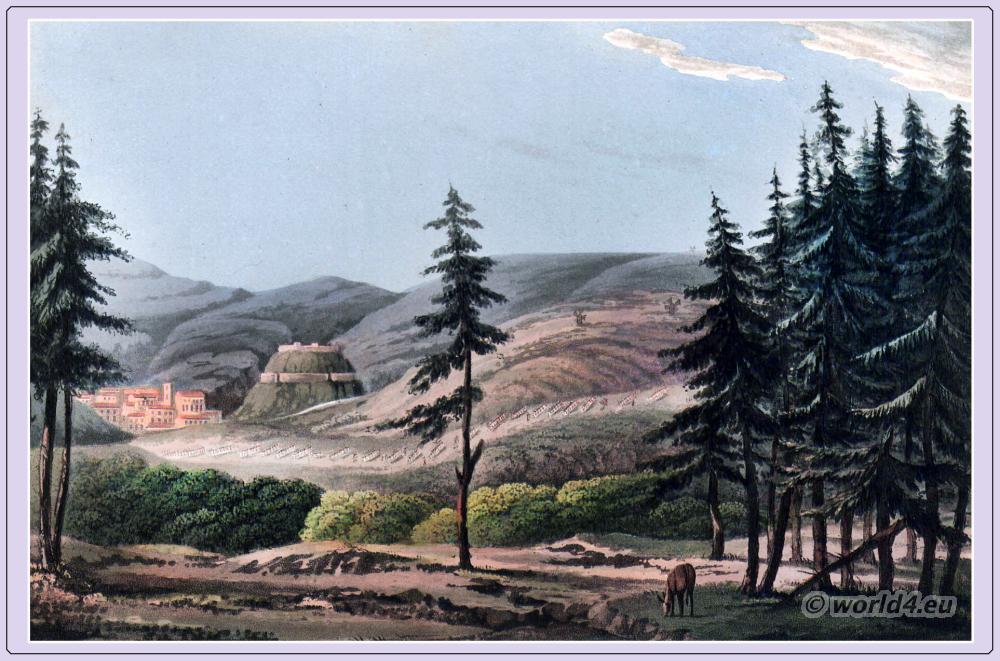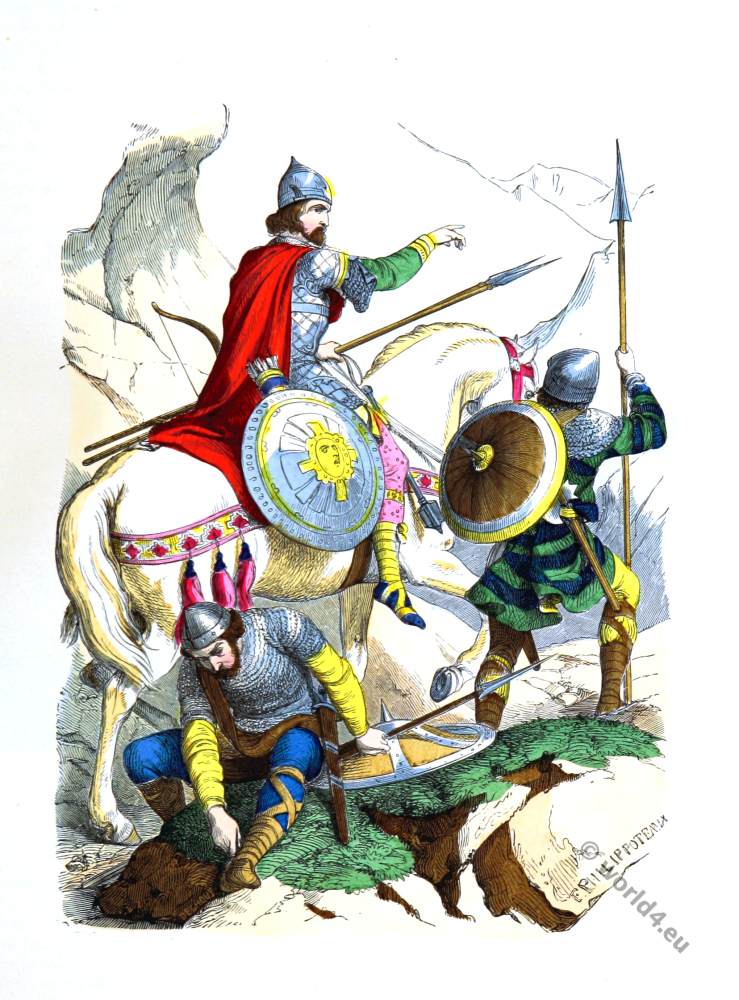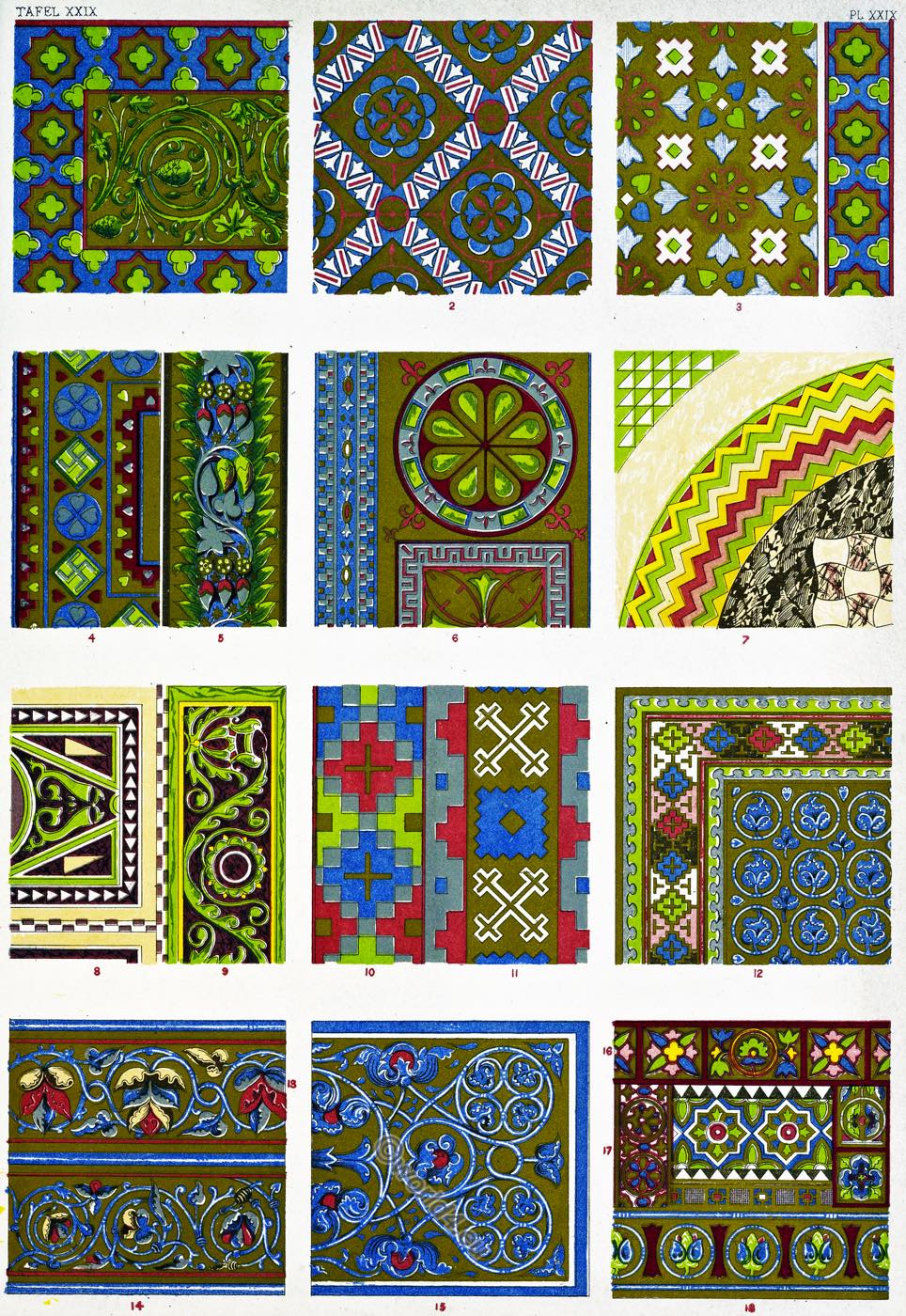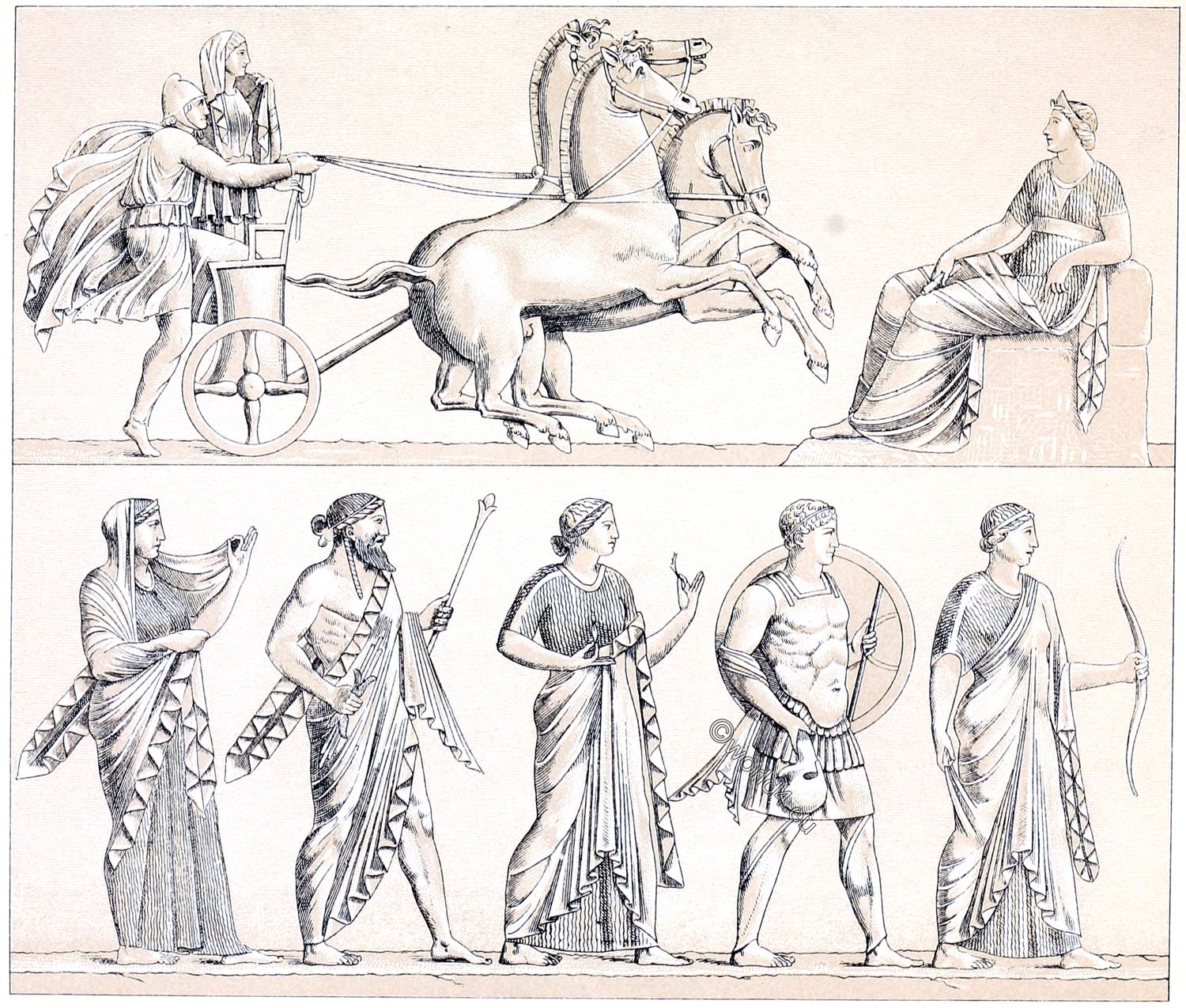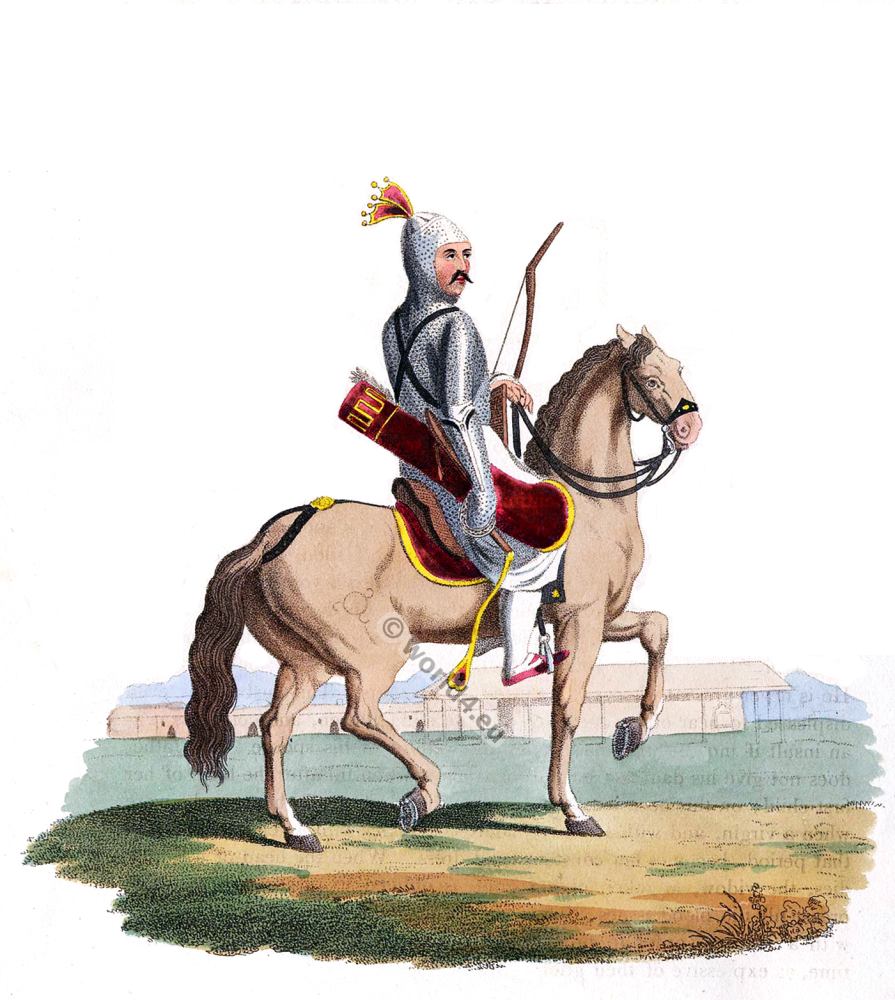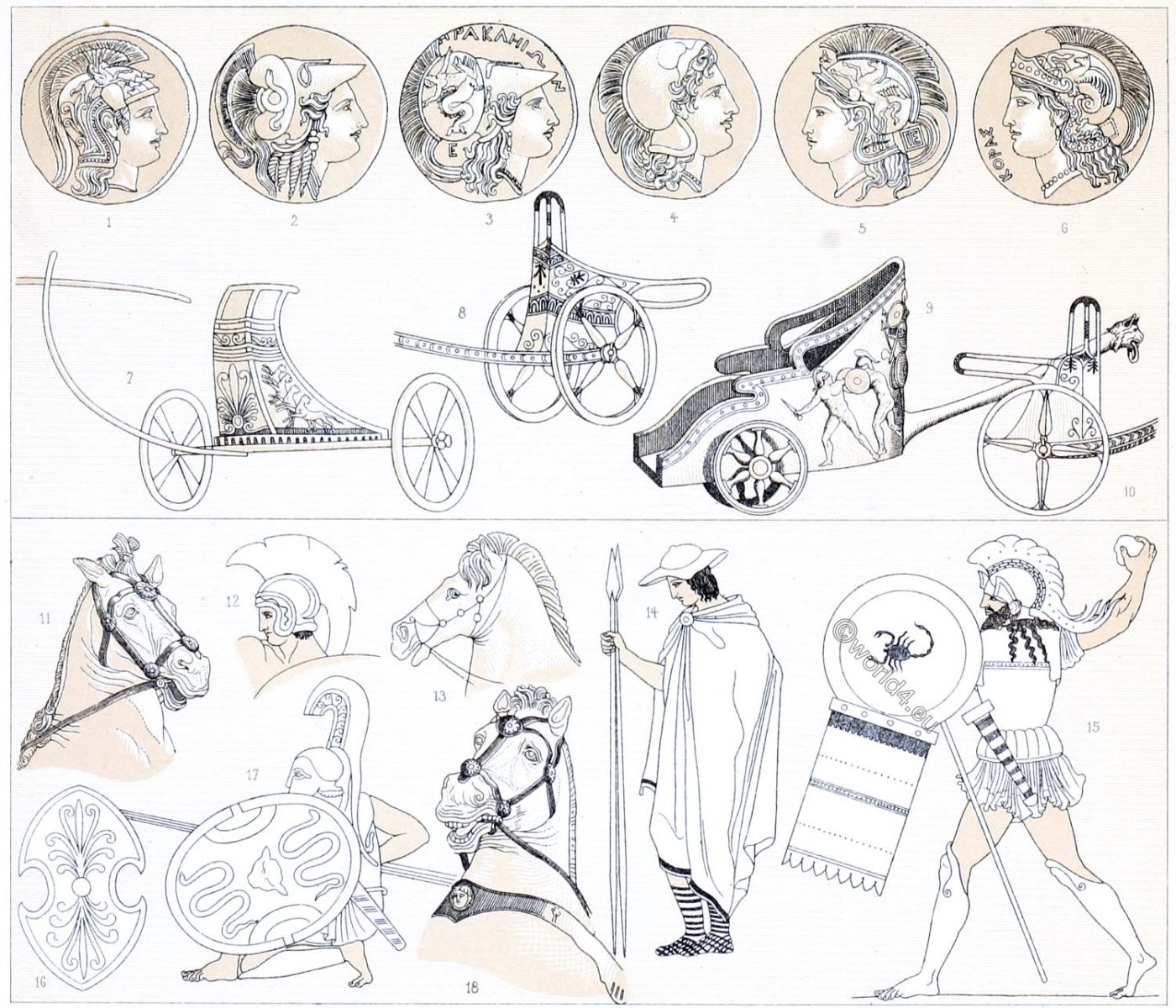
GREECE. WAR COSTUMES. DIFFERENT WEAPONS. WAR-CARRIAGES.
No. 1, 2, 3, 4, 5, 6 and 12. Different types of the Greek helmet, all with hair bushes, but without feathers and with neck guard. Nos. 1, 4, 5, 6 and 11 are closely connected to the head. Nos. 2 and 3 are examples of the helmet with immovable visor, the so-called Boeotic helmet. No. 6 seems to be the phrygian form of the helmet. The hair bushes are single or triple. In the latter case, tubes were attached to the sides of the helmet to hold it.
No. 15. Leader in full armor. He carries a harness, greaves, lance, sword and shield with a heraldic animal. A piece of cloth hangs down from the shield, which served to catch the arrows and protect the legs. In his right hand he holds a stone to hurl it against the enemy. We read in Homer that the heroes used the stone throws either to provoke each other to fight or when they had no other weapons.
No. 17 Greek soldier with Boeotic shield and helmet. His hair bush is very long and hangs down on his back.
No. 14. Greek youth. He wears a Himation, which is held together at the neck by an agraffe, the Petasos and high boots, which are formed from cords. The two spears in his hand and the boots indicate that he is ready to hunt.
No. 16 Pelta, the shield of the lightly armed, made of wood or willow wicker and usually also covered with metal. The pelta of the Amazons was crescent-shaped.
Nos 7, 8, 9 and 10. War, race and triumphal chariots. The light car no. 7 seems particularly suitable for races and circus games due to its design. No. 9 is one of those splendidly equipped chariots which the artists gave to the gods and heroes on their triumphal processions. Several persons could stand on it. Nos. 8 and 10 are war chariots from the heroic period, which were usually covered with two horses. Only two men had place on them, the charioteer and the fighter. Above the upper edge of the wagon body there was a kind of handle to which the reins were attached.
Although the heroes standing on the chariots fought each other with spears or attacked the Foot People, the chariot was essentially only a means of transport so that the warrior could quickly move from one place of the battlefield to another. The chariot was also necessary because of the heavy armament of the heroic warrior. In the heated battle the warrior left his chariot and fought on foot. The charioteer then had the task to be as close as possible to his lord in order to bring him to safety if necessary, or even to completely remove the wounded from the enemy.
The charioteer had to know how to handle the weapons at the same time. It sometimes happens that the horse-driver rises from the wagon and intervenes in the battle himself, as is reported, for example, by Automedon, the wagon driver of Achilles. Patroklos also sometimes acted as a driver himself on Achilles’ car. To drive the horses, either a scourge, a whip with leather straps or a long whip was used. To cover the chariots, mares were chosen with preference.
Nos. 11, 13 and 18 show how the horses were protected in battle by armor and straps. White bronze, which did not rust, was used for the fittings and rosettes on the reins, which were so short that the horse almost always had to move his tongue. It is probable, by the way, that the horses of the Greeks were also protected, at least in the older times, by ore armour, like those of the Middle Ages.
(After Willemin, Costumes des peuples de l’antiquité.)
Source: History of the costume in chronological development by Auguste Racinet. Edited by Adolf Rosenberg. Berlin 1888.
Related
Discover more from World4 Costume Culture History
Subscribe to get the latest posts sent to your email.

